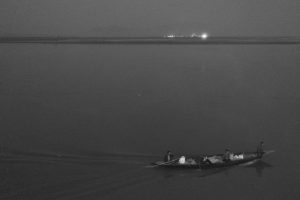After a long time hemming and hawing, I finally have a Ricoh GRIIIx HDF! It’s been a very long time since I’ve shot with a dedicated camera. I borrowed an X100 for a trip two years ago, but ever since prices of film went up, and the cost for development and scanning became unaffordable for me, I’ve been shooting all my photos on my phone.
One of the big draws of this camera is the ability to use recipes to get a particular look to your photos. Here are some that I’m experimenting with at the moment:
REGGIE’S COLOR NEGATIVE FILM SIMULATION RECIPE
Film Simulation: Negative Film
Saturation: +2
Hue: 0
High/Low Key: 0
Contrast: +3
Contrast (Highlight): -4
Contrast (Shadow): -1
Sharpness: +1
Clarity: 0
Highlight Correction: Auto
Shadow Correction: Medium
High-ISO Noise Reduction: Off
White Balance: Auto
WB Compensation: A:6 G:0

It’s a lovely colour recipe that’s been very well received in the Ricoh GR community. I like it quite a bit too.
I believe the Ricoh GR III offers the best black-and-white profiles – even Fuji can’t match it. After hours of testing, I found that the following settings produced the best results for this Ricoh GR III Recipe:
- Profil: BW (Monotone)
- High/Low Key Adj: +1
- Contrast: +3
- Contrast (Hightlights): -4
- Contrast (Shadows): -2
- Sharpness: -4
- Toning: —
- Filter Effect: 2
- Shading: +1
- Clarity: +3
- Grain Effect: 3
- White Balance: K: 2500 K | Color-Shift: G14:B14
- WB Fine-tuning: Off
- AWB in Tungsten: Low
- Peripheral Illum. Corr.: On
- D-Range Corretion: Hightlight Correction: On
- D-Range Corretion: Shadow Correction: Medium
- Noise Reduction: Off
- Exposure Compensation: +0.3 to +1.0 (Usually +0.7)
The Grain: Two Approaches
One defining characteristic of the Tri-X look is the grain, which adds depth and texture to the images. There are two ways to achieve this:
Authentic Grain with Lightroom:
To closely replicate the irregular and textured grain of Tri-X 400, I used the following settings in Lightroom:
- Grain Amount: 75
- Grain Size: 35
- Roughness: 100
These settings complement the camera’s output beautifully and create a result that closely resembles the analog original.
Directly from the Ricoh:
If you’d rather avoid post-processing, this Ricoh GR III Recipe lets the camera produce great results on its own. My recommendation: set ISO to 6400 and Grain Effect to High. While the grain is more uniform than the analog version, it still delivers a convincing look – no additional editing required.

Tri-X is the black and white film that I have the most experience with. This recipe gets me quite close to that.